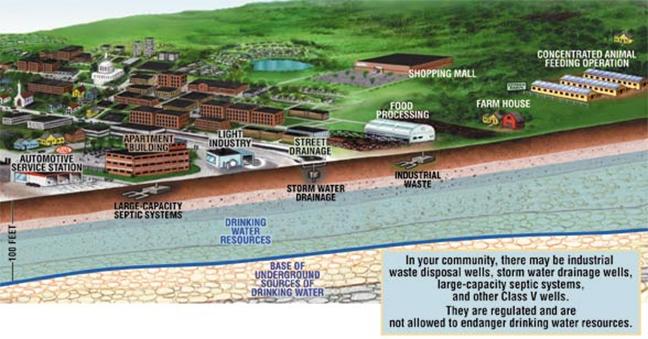Class V Wells for Injection of Non-Hazardous Fluids into or Above Underground Sources of Drinking Water
On this page:
Use of Class V wells
Class V wells are used to inject non-hazardous fluids underground. Most Class V wells are used to dispose of wastes into or above underground sources of drinking water. This disposal can pose a threat to ground water quality if not managed properly.
The different types of Class V wells pose various threats. Most Class V wells are shallow disposal systems that depend on gravity to drain fluids directly in the ground. Over 20 well subtypes fall into the Class V category.
EPA estimates that there are more than 650,000 Class V wells in operation nationwide. Most of these Class V wells are unsophisticated shallow disposal systems. Examples include:
- Stormwater drainage wells
- Septic system leach fields
- Agricultural drainage wells
Complex Class V wells
 Your community may have industrial waste disposal wells, stormwater drainage wells, large-capacity septic systems, and other Class V wells. They are regulated and are not allowed to endanger underground sources of drinking water.
Your community may have industrial waste disposal wells, stormwater drainage wells, large-capacity septic systems, and other Class V wells. They are regulated and are not allowed to endanger underground sources of drinking water.
EPA's regulations define Class V wells as injection wells not included in other well classes. As a result, in addition to shallow wells, the Class V well category includes deep complex wells used at commercial and industrial facilities. Complex Class V well types may include:
- Aquifer storage and recovery wells
- Geothermal electric power wells
- Experimental wells used for pilot geologic sequestration
Regardless of the use of Class V wells, owners and operators are responsible for protecting underlying ground water from contamination.
